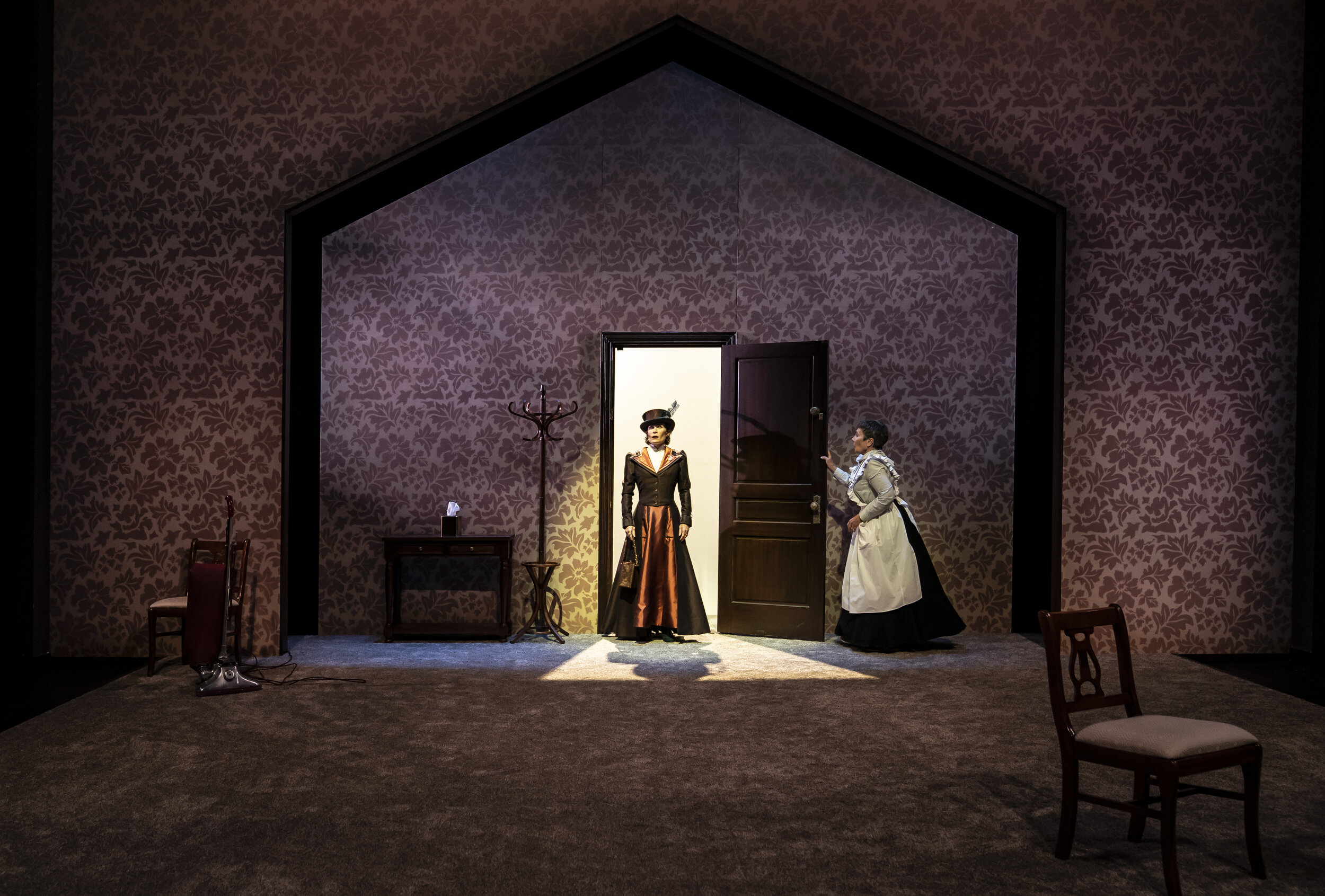Nora returns -- "A Doll’s House, Part 2" is a Complex and Compassionate Conclusion to a Timeless Story
Photo by Liz Lauren.
Earlier this summer, American Players Theatre’s audiences were stunned when Henrik Ibsen’s heroine, Nora Helmer (Kelsey Brennan) walked out of her house, leaving her husband Torvald (Nate Burger) and their three children behind. Now audiences have the opportunity to see what happened next, in the company’s astounding production of A Doll’s House, Part 2, by Lucas Hnath.
It turns out that in addition to shocking 19th century audiences, creating a completely new kind of female character and pioneering theatrical realism, Ibsen’s A Doll’s House also has one of the best cliffhangers in dramatic literature. Answering some of the story’s lingering questions, Hnath has created an intriguing, emotionally complex and compassionate conclusion. It stays true to the characters Ibsen created, while inserting modern language and contemporary discussions about love, marriage, morality and how difficult it is to be fully honest with another human being.
Photo by Liz Lauren.
When Nora (a radiant Colleen Madden) comes back to her former home, 15 years after striking out to declare her independence, things have definitely changed. Working with some of the same elements he created for the play’s predecessor, Andrew Boyce has designed a sparse set for A Doll’s House, Part 2. Most of the furniture is gone. The wallpaper looks faded, and the hardwood floor has been covered with tan carpeting.
Fashions, created by Raquel Adorno, have changed too. Nora’s flouncy, rose colored bustle dress has been updated to a prim, rust-colored suit dress with a chic, turn-of-the century silhouette. A luxurious smoking jacket has been replaced with a sensible blue suit for Torvald (the sober Jim DeVita).
Tiny modern touches remind the audience that this play is not a museum piece; the maid Anne Marie (a delightfully pragmatic Sarah Day) wears red sneakers under her uniform and wields an electric Hoover vacuum. Nora sports an uber-stylish haircut. This matches Hnath’s language, which is current and direct. These elements all coalesce around a decidedly present-day meditation on the historic question: How can two people love each other completely and also allow one another to be free?
Photo by Liz Lauren.
When Nora opens the door bathed in warm light, looking strong, poised and confident, Torvald greets her with stunned silence; he is bitter and emotionally frozen. Over the course of the play the former couple wrestles with the past, blames and accuses each other in turn, and tries to inch toward an understanding of where things went wrong. Pauses are filled to the breaking point. Accusations are both frightening and refreshingly honest. Eruptions of emotion feel like genuine release.
Under the clear-eyed direction of the company’s artistic director Brenda DeVita, the actors toggle between whirlwinds of motion and stillness. Physically, Madden has never been so animated on stage. Clenching her fists, throwing punches in the air, she struggles against the confinement of society, the house and her own clothes, unbuttoning her blouse, rolling up her sleeves and at one point throwing her boots off in a rage. While her docile, naive daughter Emmy (a demure Melisa Pereyra) is measured and obedient, Nora rages at a world that has not changed enough yet for women.
Photo by Liz Lauren.
In one of the most poignant moments of the play, both Nora and Torvald collapse on the floor from exhaustion, eventually inching closer to one another. They have a real conversation for the first time. Although it’s heartbreaking that this truce has come so late, it is reassuring that it can happen at all.
Don’t go see A Doll’s House, Part 2 because you feel like you have to see the end of a classic story. Go see this inspiring production so you can look at the characters — and the issues they raise — in a brand new light.



